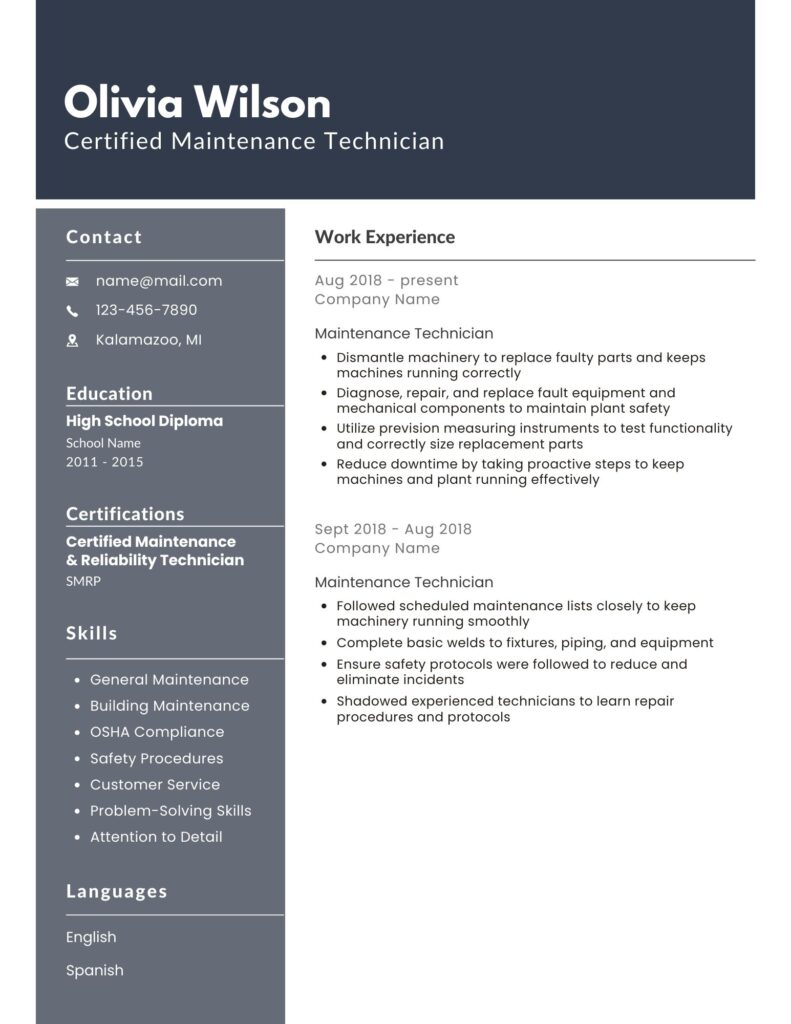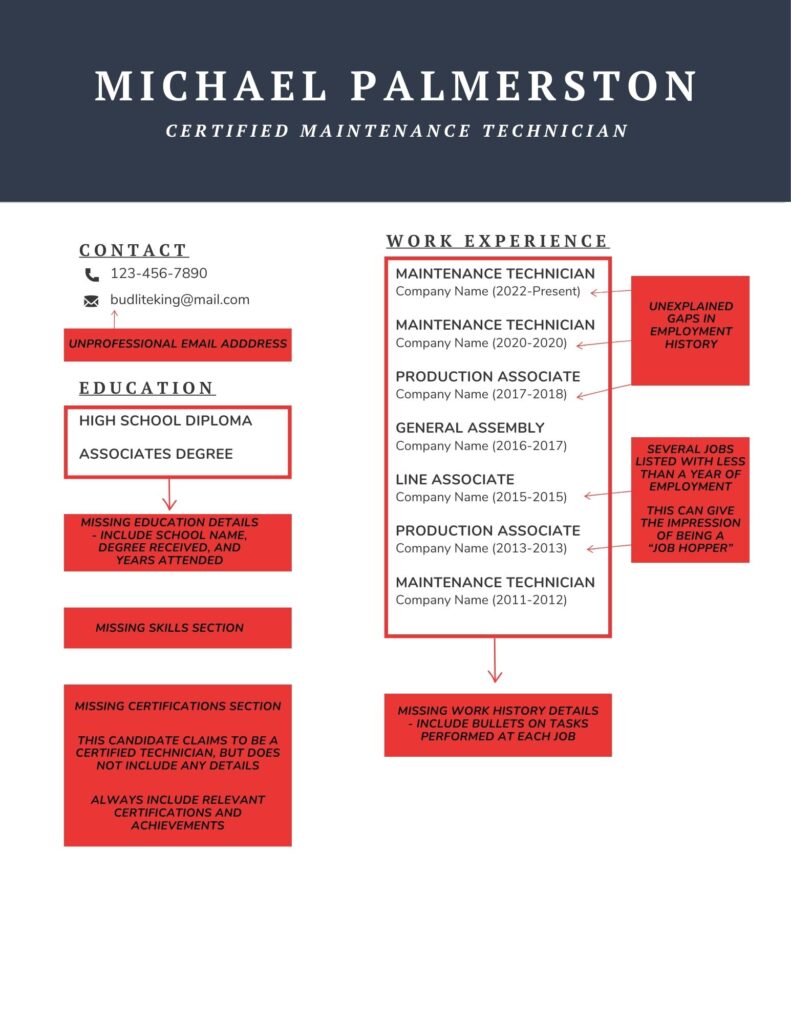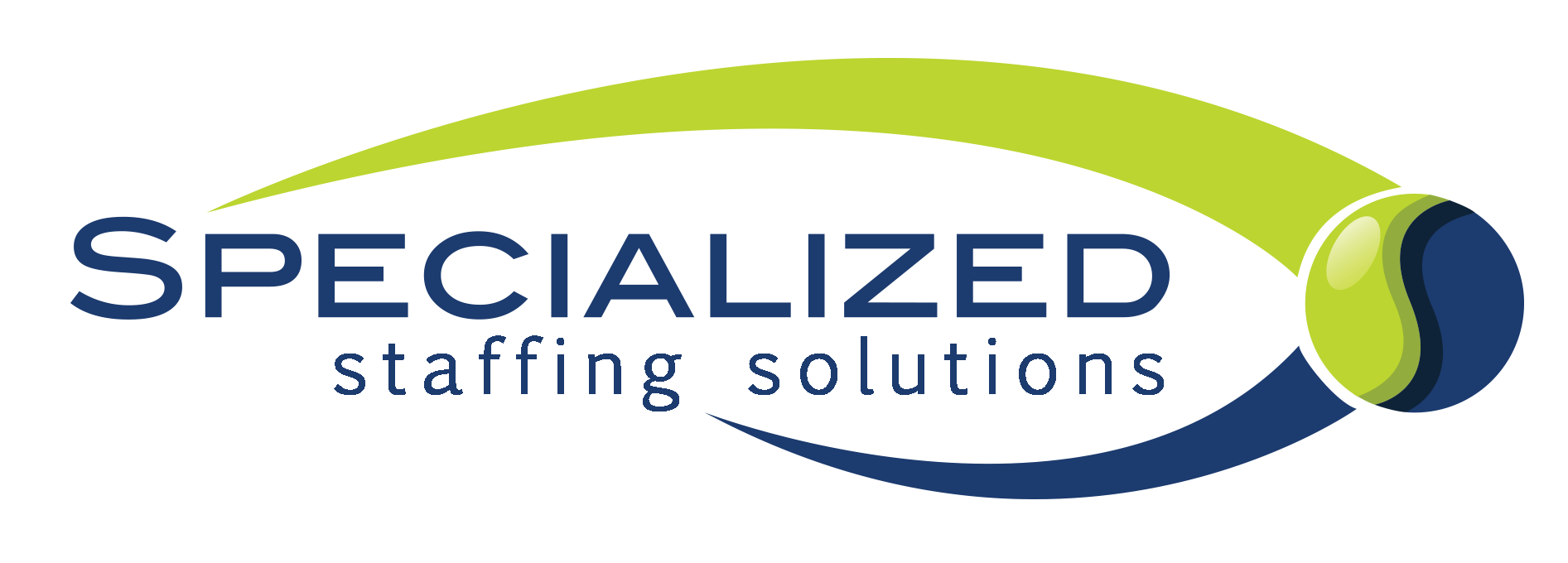
Quick Tips

1. Organize Details
Start by listing your work history starting with your most recent experiences first. Next, outline your educational background, highlighting your degrees and any certifications you've obtained.

2. Contact Information
Including accurate contact information on your resume is crucial for potential employers to reach you easily. Provide your phone number, email address, and location.

3. Relevant Skills
Identify and list skills that you've gained throughout your work history, emphasizing both technical expertise and soft skills such as communication and problem-solving.

4. Keep It Concise
Keep your resume to one page to make it easier for potential employers to get through your resume, and increase your chance of making a good first impression and getting the position

5. Proof Read
Take the time to carefully review every section, checking for typos, grammatical errors, and inconsistencies. A polished resume demonstrates attention to detail and enhances your credibility as a candidate.

6. Update Reguarly
By staying current with your achievements, skills, and experiences, you ensure that your resume accurately reflects your professional growth and qualifications. This saves time when applying for new opportunities

1. Organize Details
Organizing your resume with clarity and purpose is essential to making a strong impression on potential employers.
- Start by listing your work history in chronological order, beginning with your most recent position and working backward. This approach provides recruiters with a clear understanding of your career progression and recent experiences.
- Keep in mind, that having an extensive work history can be a valuable asset, but it doesn’t necessarily mean you need to include every job on your resume. Instead, focus on highlighting the roles and experiences that are most relevant.
- Following your work history, include your educational background, including degrees, institutions attended, and any achievements. This section helps establish your qualifications and provides context for your professional accomplishments.
- Finally, showcase any certifications or training that are relevant to your role or industry. This could include technical skills, or industry-specific certifications.
By structuring your resume thoughtfully, you’ll present a clear and compelling snapshot of your professional journey.

2. Contact Information
Ensure your resume stands out by including up-to-date contact information that you actively monitor.
- Begin by including your phone number, as it is the primary method for potential employers to contact you regarding job opportunities.
- Following that, include your current personal email address, which you check regularly. Be mindful to use an email address free of any offensive language, as this can raise concerns for potential employers.
- Finally, showcase any relevant skills or certifications that are relevant to your role or industry. This could include technical skills, language proficiencies, or industry-specific certifications.
By structuring your resume thoughtfully, you’ll present a clear and compelling snapshot of your professional journey.

3. Relevant Skills
Incorporating a wide range of skills on your resume is a great way to showcase your qualifications to potential employers.
- Highlight job-specific technical skills relevant to the position, demonstrating proficiency in tools, software, programming languages, or specialized equipment essential for the role.
- Beyond technical skills, remember to highlight soft skills such as communication, teamwork, and problem-solving abilities.
- Additionally, including fluency in multiple languages can be a valuable asset in today’s globalized workforce.
By including a robust mix of job-related skills, soft skills, and spoken languages, you present yourself as a well-rounded candidate capable of thriving in various environments.

4. Keep it Concise
Keeping your resume to one page is important for several reasons. Firstly, it ensures that recruiters can quickly and easily review your qualifications without feeling overwhelmed by unnecessary details. Additionally, it demonstrates your ability to prioritize information and communicate effectively, two qualities highly valued by employers.
- Focus on including only the most relevant experiences, skills, and achievements.
- Use concise language and bullet points to convey information efficiently, and avoid lengthy paragraphs or redundant details.
By following these tips, you can create a streamlined and impactful resume that maximizes your chances of securing the desired job opportunity.

5. Proof Read
Proofreading your resume is crucial as even minor typos can detract from your professionalism and attention to detail. To ensure your resume is error-free, take the time to review it carefully before submitting it to potential employers.
Here are some tips to help you proofread effectively:
- Take a break: Step away from your resume for a while before proofreading it. This allows you to approach it with fresh eyes, making it easier to spot errors.
- Use spell check and grammar tools: Utilize spell check and grammar tools available in word processing software to identify spelling and grammatical errors. However, be cautious as these tools may not catch all mistakes, so manual proofreading is still necessary.
- Print it out: Print a hard copy of your resume and review it on paper. This can make it easier to spot errors compared to reading it on a screen.
- Ask for feedback: Consider asking a friend, family member, or mentor to review your resume. A fresh pair of eyes can catch mistakes that you might overlook.
By proofreading your resume thoroughly and implementing these tips, you can present a polished and professional document that enhances your chances of impressing potential employers.

6. Update Regularly
Consistently updating your resume is a proactive strategy for managing your career. By keeping your accomplishments, skills, and experiences updated, you guarantee your resume reflects your ongoing professional development and credentials accurately. This habit not only streamlines the job application process but also portrays you as an organized and proactive candidate.
- Set a reminder: Schedule regular check-ins to review and update your resume, whether it’s quarterly, semi-annually, or annually. This ensures you don’t overlook any recent achievements or experiences.
- Document as you go: Keep a running list of your accomplishments, new skills, and relevant experiences as they happen. This makes it easier to update your resume when the time comes and prevents you from forgetting important details.
- Seek feedback: Share your updated resume with trusted colleagues, mentors, or professional contacts for feedback. They can provide valuable insights and suggestions for improvement.
Whether you’ve wrapped up a project, gained new skills, or earned recognition, incorporating these updates into your resume ensures you’re well-prepared to capitalize on future career prospects.
Resume Examples
Good Resume Example
The candidate below has organized their resume well making it easy to read. Included key information such as contact information, work history, education details, skills, and certification.

Bad Resume Example
The candidate below has left out valuable information include details on their work history, relevant skills, certifications, and has included limited contact information with an unprofessional email address

